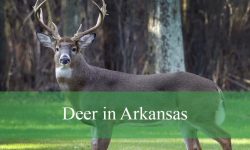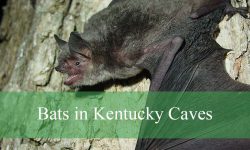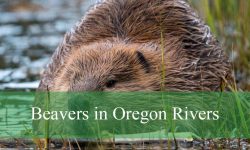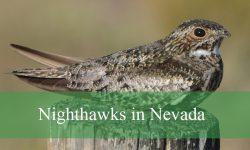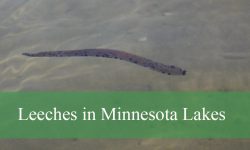Raccoons have become one of the most recognizable animals living near people. In Florida’s expanding suburbs, these clever mammals appear in backyards, parks, trash bins, and even quiet residential streets long after sunset. Their masked faces and nimble paws make them both charming and mysterious.
Many residents think raccoons are simply pests looking for handouts. Yet their behavior reflects far more intelligence, adaptability, and ecological importance than people often realize. Florida’s warm climate, abundant water, and year round food supply create ideal conditions for raccoons to thrive in neighborhoods.
This article uncovers the surprising truths behind raccoons in Florida suburbs. Their biology, feeding strategies, family structure, and clever habits reveal a creature far more complex than most people expect.
Understanding Florida’s Suburban Raccoons
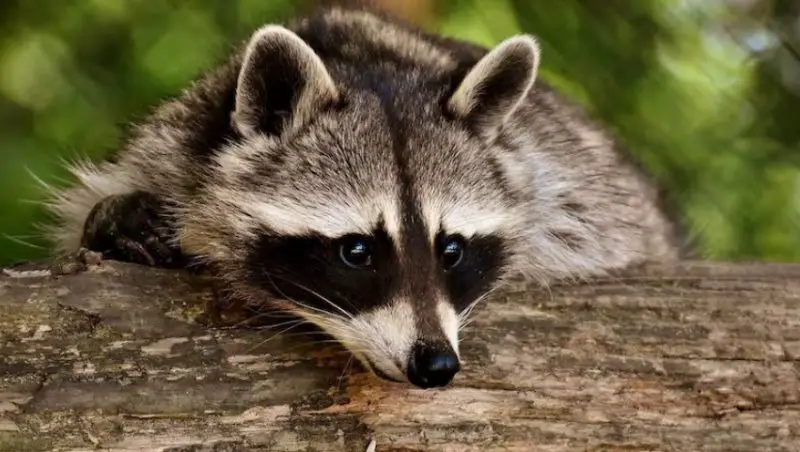
What Raccoons Really Are
Raccoons belong to the species Procyon lotor. They are medium sized mammals characterized by their black facial mask and ringed tail. Their front paws are highly dexterous and resemble tiny hands. This enables them to open latches, manipulate objects, and access food hidden inside containers.
They possess highly developed sensory abilities. Their sense of touch is especially advanced which explains their ability to investigate objects with incredible precision.
Why Raccoons Flourish in Florida
Florida’s climate is warm and humid. This allows raccoons to remain active throughout the year. They do not hibernate. Suburbs provide food in the form of trash, pet food, garden fruits, insects, and small animals.
Neighborhood ponds, canals, retention lakes, and marshes provide endless water sources. This combination of food and water creates ideal living conditions.
Where Raccoons Live in Florida Suburbs
Raccoons occupy diverse habitats including wooded edges, drainage ditches, stormwater systems, golf courses, parks, and suburban backyards. They shelter in hollow trees, attics, crawlspaces, and abandoned burrows.
Their ability to live near people while avoiding detection makes them highly successful suburban animals.
Physical Adaptations That Make Raccoons So Successful
Remarkable Dexterity
Raccoons have exceptionally sensitive forepaws. More than two thirds of the sensory receptors in their brain connect to their paws. This allows them to interpret objects by touch alone.
Their paws help them open coolers, turn doorknobs, lift lids, and access food sources that most wildlife cannot reach.
Enhanced Night Vision
Raccoons are crepuscular and nocturnal. Their eyes contain a reflective layer called the tapetum lucidum which amplifies available light. This adaptation helps them navigate dark neighborhoods without difficulty.
Many residents spot the reflective glow of their eyes when headlights or porch lights shine on them.
Strong Climbing Ability
Raccoons climb trees, fences, walls, and even gutters. They use sturdy limbs and sharp claws to maneuver across roofs and branches. This allows them to access nesting spots or escape danger quickly.
Behavior Patterns of Raccoons in Florida
Nocturnal Lifestyles
Most raccoon activity occurs after sunset. They search for food, explore yards, and teach young raccoons how to navigate suburban spaces. Their nighttime behavior helps them avoid humans and dogs.
Opportunistic Feeding
Raccoons eat nearly anything. Their omnivorous diet includes fruits, fish, insects, frogs, garbage, small mammals, eggs, birds, and leftover pet food. Florida’s year round growing season provides constant food availability.
Their flexible diet is one of the main reasons they adapt so easily to human environments.
Highly Curious Nature
Raccoons investigate anything unusual in their surroundings. Curiosity helps them identify food sources but also leads them into conflicts with humans.
Feeding Habits in Florida Suburbs
Garbage as a Food Source
Trash cans provide easy calories. Raccoons quickly learn which homes leave unsecured garbage. They memorize schedules, locations, and patterns. Their intelligence allows them to revisit successful food sources reliably.
Pet Food and Bird Feeders
Outdoor pet bowls attract raccoons at night. Bird feeders spill seeds on the ground which raccoons consume readily. These sources support growing suburban populations.
Natural Food in Residential Areas
Florida suburbs contain insects, lizards, fruits, fish, snails, and frogs. Raccoons incorporate these natural foods into their diet. Neighborhood lakes and stormwater canals provide hunting grounds for crayfish and small fish.
Hidden Secrets About Raccoon Intelligence
Problem Solving Abilities
Raccoons can solve puzzles, remember solutions for years, and learn through observation. Their intelligence rivals that of some primates in tasks involving memory and sensory interpretation.
In suburban environments, this intelligence helps them open containers, identify weak points in fences, and adapt to artificial structures.
Memory Strength
Raccoons remember food locations, escape routes, and dangerous situations long after encountering them. Their long term memory plays a major role in nightly navigation.
Communication Skills
Raccoons use more than fifty vocalizations including chirps, hisses, trills, and growls. They also communicate through body posture and touch especially between mothers and offspring.
Raccoon Reproduction and Family Structure
Breeding Season
In Florida, raccoon breeding season begins as early as January and may extend into spring. The warm climate allows earlier mating compared to northern regions.
Birth and Early Development
Females give birth to litters of two to five kits. Kits are born blind and helpless. Mothers provide constant care through grooming, nursing, and warmth. The family remains inside dens for several weeks.
Teaching Survival Skills
Young raccoons follow their mothers during nightly foraging. They learn how to climb, hunt, search for food, and avoid danger. This period of learning is critical to their survival.
By late summer, many juveniles become independent but some remain near the mother’s home range for several months.
Where Raccoons Nest in Florida Suburbs
Trees and Natural Structures
Raccoons use hollow trees, palm cavities, dense shrubs, or abandoned burrows. These offer natural shelter from predators and storms.
Structures Around Homes
Attics, crawlspaces, sheds, and roofs attract raccoons seeking safety. They enter through loose soffits, vents, chimneys, or damaged shingles.
Stormwater Systems
Urban raccoons sometimes shelter in storm drains and culverts. These structures provide cool, shaded environments during hot Florida summers.
Human Raccoon Conflicts in Florida
Property Damage
Raccoons may tear shingles, pull off vent covers, rip screens, or raid garbage bins. Their digging and climbing create noise that disturbs homeowners.
Interaction With Pets
Although raccoons generally avoid confrontation, conflicts may occur when pets approach them. They defend themselves effectively with claws and teeth.
Scavenging Behavior
Once raccoons discover food sources, they may return nightly. This creates patterns of nuisance behavior in certain neighborhoods.
Environmental Importance of Raccoons
Seed Dispersal
Raccoons eat fruits and berries and later deposit seeds in new locations. This supports plant diversity.
Controlling Invertebrate Populations
By feeding on insects, amphibians, and crustaceans, raccoons indirectly influence ecological balance.
Scavenging Role
Raccoons help remove dead animals and organic waste from the environment. Their scavenging prevents buildup of decomposing material.
Myths and Misunderstandings About Raccoons
Myth: All Raccoons Are Aggressive
Raccoons avoid humans whenever possible. Aggression occurs mainly when they are cornered or defending young.
Myth: Raccoons Always Carry Rabies
While raccoons can carry rabies, the majority are healthy. Risk is significantly lower than public perception suggests. Avoiding contact is the best precaution.
Myth: Raccoons Are Dirty
Raccoons groom themselves regularly. Their hygiene habits help maintain healthy fur and reduce parasites.
Survival Strategies in Florida’s Climate
Heat Adaptation
Raccoons remain active during warm nights. During hot days they hide in shaded dens to avoid heat stress.
Storm Survival
Florida’s rainy season and hurricanes challenge wildlife. Raccoons take shelter in trees, sturdy structures, and underground passages to avoid severe weather.
Wetland Navigation
Many suburban areas border wetlands. Raccoons are strong swimmers and use shallow waterways to travel quietly between territories.
Raccoons in Florida’s Urban and Suburban Ecosystems
Coexistence With Human Development
Raccoons adapt quickly to new construction, landscaping, roads, and artificial water systems. Suburbs create an environment with more food, fewer predators, and accessible shelter.
Expansion of Raccoon Range
Urban areas allow raccoons to expand into territories that were once uninhabitable. Artificial lights, irrigation systems, and stormwater canals create corridors for movement.
Nighttime Observations
Residents often spot raccoons near trash bins, backyard ponds, driveways, and rooftops. Their movements become part of suburban nightlife.
Raccoon Communication and Social Behavior
Vocal Interactions
Raccoons produce distinctive sounds to express emotions, warnings, and social cues. Mothers and kits communicate frequently during early development.
Scent Marking
Raccoons use scent glands and urine to mark territory. These markings help them navigate and avoid conflicts with other raccoons.
Social Flexibility
Raccoons may live alone or in small groups. Females with young form family groups while males often roam larger territories.
Raccoon Diet in Florida’s Suburbs
Natural Food Sources
Raccoons consume berries, figs, acorns, frogs, crayfish, insects, small fish, and eggs. Florida’s warm climate supports abundant natural foods throughout the year.
Human Provided Food
Pet bowls, compost piles, unsecured garbage, and bird feeders supplement their diets. These foods increase survival and encourage raccoons to spend more time near homes.
Seasonal Variations
Food availability changes with rainfall, temperature, and fruiting cycles. Raccoons shift their diet as needed to maintain energy and growth.
How Raccoons Influence Florida Backyards
Soil Turning
Raccoons dig for insects and grubs. This can aerate small patches of soil but may disturb lawns.
Pond and Garden Activity
Raccoons investigate water features, catch fish, and eat fruits from gardens. Their natural curiosity brings them into contact with ornamental plants and backyard ecosystems.
Presence of Wildlife
Where raccoons are abundant, other wildlife may shift behaviors. For example, birds nesting near the ground may become more cautious.
Environmental Threats to Raccoons in Florida
Road Mortality
Suburban roads pose significant hazards. Many raccoons are struck by vehicles while traveling at night.
Habitat Fragmentation
Urban expansion reduces natural woodland edges. Raccoons adapt but must navigate increasingly artificial landscapes.
Climate Change Effects
Rising temperatures and extreme weather patterns influence food sources and water availability. These changes affect raccoon behavior and movement.
Positive and Negative Roles in Suburban Ecology
Benefits
Raccoons control pests, disperse seeds, and recycle nutrients. Their feeding on unwanted insects benefits gardens and natural areas.
Downsides
Their curiosity leads them into human spaces resulting in nuisance behavior. They may damage structures or access food intended for pets and wildlife.
Balancing Perspectives
Understanding raccoon behavior helps residents reduce conflict and appreciate their environmental contributions.
How Residents Can Reduce Raccoon Conflicts
Securing Trash Bins
Using raccoon proof lids, straps, or heavy containers prevents access. Securing bins reduces nightly visits.
Removing Attractants
Bringing pet food indoors, cleaning grill areas, and eliminating fallen fruit reduces incentives for raccoons to visit yards.
Blocking Entry Points
Securing attic vents, chimneys, and crawlspace openings prevents raccoon nesting. Sturdy materials withstand raccoon attempts to pry open weak spots.
Respectful Distance
Avoid attempting to feed or pet raccoons. Keeping distance protects both humans and animals.
FAQs About Raccoons in Florida Suburbs
Are raccoons dangerous
They are not dangerous unless approached or cornered.
Do raccoons attack pets
They generally avoid pets but may defend themselves if threatened.
Why do raccoons visit trash cans
They seek easy food sources provided by unsecured garbage.
Can raccoons swim
Yes. They are excellent swimmers and navigate canals, ponds, and lakes easily.
Are raccoons active in winter
Yes. Florida’s warm climate keeps them active year round.
Do raccoons carry rabies
It is possible but uncommon. Avoid direct contact as a precaution.
How do raccoons climb roofs
They use claws and strong limbs to scale fences, trees, and gutters.
Why do raccoons wash food
Raccoons manipulate food in water to enhance tactile perception.
How long do raccoons live
They live several years in the wild, often longer in protected environments.
Why are raccoons common in suburbs
Suburbs offer food, water, and shelter which support raccoon populations.
Conclusion
Raccoons in Florida suburbs are far more complex than many people realize. Their intelligence, adaptability, and ecological roles reveal a creature capable of thriving in both natural and human dominated environments. They shape local ecosystems through seed dispersal, scavenging, and pest control while navigating the challenges of suburban life.
Understanding raccoon behavior helps residents make informed decisions that reduce conflict and encourage peaceful coexistence. These animals have adapted remarkably to Florida’s climate and suburban expansion. Their story demonstrates how wildlife continues to evolve alongside human communities in surprising and sometimes extraordinary ways.

